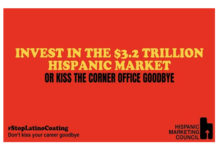Almost all FTSE 100 companies (97%) now have at least one director from an ethnic minority background, according to the latest Thomson Reuters Annual Reporting study.
The report also found that companies in the FTSE 250 are also improving levels of representation of different ethnicities at the board level, albeit at a lower rate than the FTSE 100. Of the FTSE 250 companies reviewed, 73% now have at least one director from an ethnic minority background, which is a considerable increase compared to 55% a year ago.
The latest results from Green Park’s Business Leaders Index 2024 also showed a steady increase in overall ethnic minority representation across all leadership roles in the FTSE 100 for the first time in a decade. It found that Hindu and Sikhs are the most prevalent ethnocultural group in most leadership positions across the FTSE 350 top three, top 20 and pipeline roles. Black representation, however, remains poor by comparison and has fallen at the very top levels since 2019. Furthermore, ethnic minority representation across the top three roles in FTSE 250 organisations is also half that of the FTSE 100.
WOMEN IN LEADERSHIP
In short, white males continue to hold three-quarters of the top three roles across the FTSE 350 and more than a half of top 20 roles. Meanwhile, white women hold a third of FTSE 350 Top 20 roles. In fact, the Chair, CEO and CFO roles all experienced an increase in female representation during the period 2013 to 2023. Over the last decade Women in Chair roles have increased 17% (from 1%), women in CEO risen to 9% (from 3%) and CFO roles up by 23%. (from 6%).
That said, despite the increase, women remain significantly under-represented in many roles, notably Chief Executive Officer (CEO) Chief Finance Officer (CFO), Chair, Chief Technology Officer (CTO), Chief Information Officer (CIO), Chief Operations Officer (COO), General Manager (GM), and Vice President (VP). Interestingly, most diversity and people-led positions in the FTSE 350 are held by females, and there are no males represented in Chief Diversity Officer (CDO) roles. If you combined the CHRO, CPO and HRD role totals, this would equate to 62% female representation within the FTSE 100, and 73% in the FTSE 250.
PATCHY PROGRESS
Commenting on the analysis, Sir Trevor Phillips, Chair of Green Park, stated: “There are more women leaders, more people from ethnic minorities in senior positions and a less anaemic pipeline of future bosses from different backgrounds. Much of the change has come from the efforts of enterprises themselves determined to improve their standing in the eyes of both employees and potential hires, particularly the young. But far more has been driven by companies hungry for organic growth, fuelled by the abilities of individuals they would previously never have considered for top jobs.”
That said, “the picture remains patchy”, pointed out Phillips. “Some sectors have embraced change and sought it actively. Others have remained passive, assuming that things will change organically. They don’t. We believe that our businesses will benefit from a clear picture of where we are succeeding and where we are failing; as in every other part of our businesses, good data is the foundation of good policy. And success does not come from just hoping for better outcomes; it follows determined, intentional evidence-based action.”
REPRESENTATION MATTERS
Green Park’s CEO Raj Tulsiani believes that this year’s Business Leaders Index is cause for optimism because “it shows us that progress is possible”. However, it also lays bare an enormous disconnect between organisations’ narratives about their pace of change and the statistical evidence about that pace of change.
“Having analysed the data for over 10 years, it’s clear that where industries have charged forward with amplifying their aspirations, but not changed the lived experience of people, or the visibility of representation in their leadership, there are now trust gaps. Consequently, it’s felt like one step forward and two steps backwards, in some areas. If readers of this report could take one thing away from it, it is that there isn’t a single way through all of this. Like anything, it takes commitment, accountability and a genuine understanding of the value it brings,” concluded Tulsiani.
Click here for more information about the report.




































